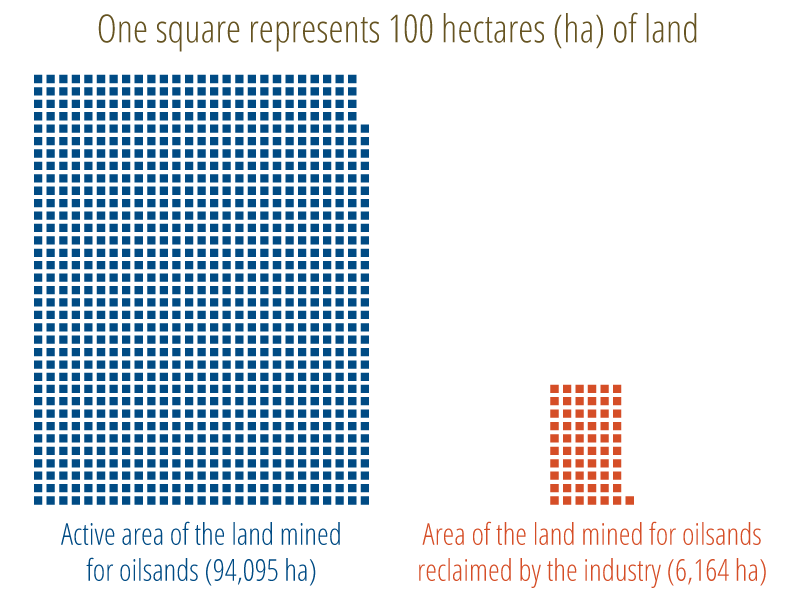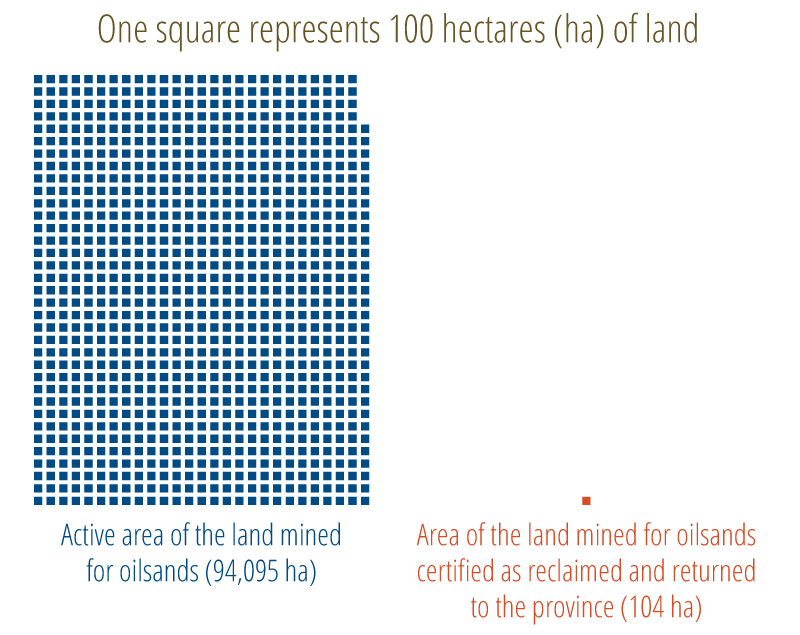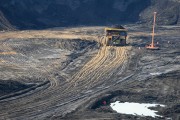Over the past 50 years, the development of the oilsands has changed the face of Alberta, driving innovation and technology to make oilsands a reality. The oilsands are the third largest oil reserve on earth, and despite a cycle of boom and busts, contribute to the prosperity of the province. Industry, however, has not addressed many of the largest environmental impacts generated by the oilsands, and much work is still left to be done. This blog is part of a series where we look back at the last 50 years of the oilsands industry and shed light on a number of the remaining challenges. See Part 1 here, Part 2 here, and Part 4 here.
Over the past 50 years, oilsands mining has ballooned in production from 60,000 barrels of oil per day to 1.2 million barrels per day. Just as remarkable is the fact that little of the land impacted by that industry has been restored to what would be widely agreed upon as an acceptable level of health, despite approval conditions that require operators to progressively “reclaim” the land.
Since 1967, of the 940 sq km disturbed by the oilsands industry, industry reports that only 60 sq km (7 per cent) have been permanently reclaimed (See Figure 1). Of this small portion, only one sq km (or 0.1 per cent of overall oilsands mining development) has been reclaimed and returned to the province (See Figure 2).
Figure 1. Comparison of the area permanently reclaimed and the active (disturbed) area of oilsand mines

Oilsand mining operations dig huge holes in the boreal forest to extract bitumen from the sand. Bitumen represents less than 12 per cent of the overall volume of material moved, so the process creates massive tailings ponds and waste piles that further disturb land. Mineable oilsands underlie a region dominated by wetlands, where lakes and grasslands are rare. Mammals, birds, fish, amphibians, reptiles, insects, and the threatened woodland caribou make their home here. This region is also significant to Indigenous communities as it supports their livelihoods and cultural traditions.
Figure 2. Comparison of the area certified as reclaimed and returned to the province and the active (disturbed) area of oilsand mines

Oilsands operators are legally obligated to progressively remediate and reclaim the land, so why has there been so little progress? For starters, there are no financial incentives for industry to comply with this condition. The only regulation that addresses reclamation activity allows operators to set their own plan and then revise it every three years. Not surprisingly, no operator has ever been in non-compliance with its own reclamation objectives. Second, in contrast to significant stakeholder concern, the Governement of Alberta has not provided guidance on what the final landscape outcomes should be. No one has decided if it is acceptable for industry to reclaim land by adding lakes and grasslands, though industry plans currently rely heavily on lakes and upland features, in direct contrast to pre-disturbance wetland landscapes. There are many unanswered questions about each operation and how individual reclamation actions will be integrated into a larger region significantly altered by bitumen extraction.
Addressing industry’s failure to restore Alberta’s land requires meaningful engagement with Albertans to talk about acceptable final landscapes, regional planning activities that weave together individual plans and, finally, initiating significant progress on actual reclamation.
Oilsands at 50 Series – The Real Cost of Development
Part 1: The Real GHG trend: Oilsands among the most carbon intensive crudes in North America
Part 2: Tailings ponds: The worst is yet to come
Part 3: Fifty years of oilsands equals only 0.1% of land reclaimed
Part 4: Protect Alberta’s caribou, or they won’t survive 50 more years










